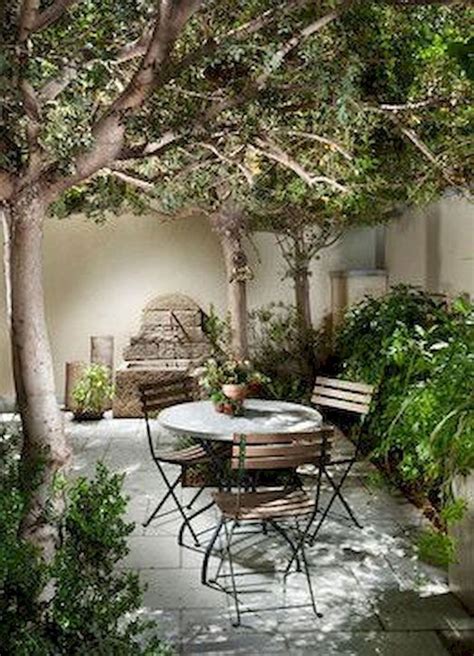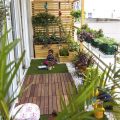How to Create a Mediterranean Balcony Garden: A Complete Guide for Small Urban Spaces
Are you dreaming of transforming your balcony into a lush Mediterranean oasis? Whether you live in a bustling city or a suburban apartment, creating a Mediterranean garden on your balcony is not only possible but also a great way to enjoy nature in small spaces. By following a few simple gardening tips and focusing on plant selection and design, you can cultivate a stunning urban garden that reflects the beauty and tranquility of Mediterranean landscapes.
Key Concepts
- Container Gardening: An essential method for balcony gardening, as space is limited. Plants are grown in pots, planters, or hanging baskets.
- Small Space Gardening: Maximizing the use of limited square footage while still achieving an abundant, vibrant garden.
- Garden Design: Designing your space to mimic Mediterranean landscapes through strategic layout and plant selection.
- Plant Selection: Choosing plants that thrive in the hot, dry conditions typical of Mediterranean climates.
Historical Context
The Mediterranean garden style originated in the regions surrounding the Mediterranean Sea, where plants had to adapt to hot, dry summers and mild winters. Over the centuries, Mediterranean gardening became synonymous with hardy plants such as olive trees, lavender, and citrus, all of which thrive in drought-prone environments. This style is now popular worldwide for its beauty, low water requirements, and ability to flourish in sunny, warm locations.
Current State Analysis
With growing urbanization, balcony gardening has become increasingly popular. Urban dwellers seek to incorporate greenery into their lives despite limited space. A Mediterranean-themed balcony garden is an ideal solution for individuals who desire a low-maintenance, visually appealing, and space-efficient garden. The key is selecting plants suited to container gardening and designing your balcony for optimal sunlight exposure.
Practical Applications
To start creating a Mediterranean balcony garden, follow these steps:
- Assess Sunlight Exposure: Most Mediterranean plants require full sun, so ensure your balcony gets at least 6 hours of sunlight daily.
- Select Containers: Opt for clay or terracotta pots that allow for better air circulation to the roots, crucial in hot climates. Ensure they have drainage holes.
- Soil and Watering: Use well-draining soil mixtures designed for cacti or succulents, as Mediterranean plants prefer dry conditions. Avoid overwatering.
- Plant Selection: Choose heat- and drought-tolerant plants, such as lavender, rosemary, thyme, and succulents. For an authentic touch, include dwarf olive or citrus trees in large containers.
- Maximize Space: Use vertical gardening techniques like hanging baskets and plant shelves to utilize every inch of your balcony efficiently.
- Accent with Decor: Enhance the Mediterranean ambiance by adding terracotta planters, mosaic tiles, and wrought-iron furniture.
Case Studies
Consider these examples of successful Mediterranean balcony gardens:
| Case Study | Description | Key Takeaways |
|---|---|---|
| Small Apartment Balcony | A couple living in a city apartment used vertical planters and terracotta pots to create a Mediterranean-style garden featuring lavender, olive trees, and thyme. | Maximized space by using vertical gardening techniques and avoided overwatering by using pots with excellent drainage. |
| Sunlit Terrace Garden | A Mediterranean-inspired garden on a sunlit terrace incorporated heat-tolerant plants such as succulents, paired with ceramic pots and rustic furniture. | Opted for hardy succulents and utilized minimal watering schedules, making the garden low-maintenance and drought-friendly. |
Stakeholder Analysis
The primary stakeholders in a Mediterranean balcony garden include urban residents, balcony gardeners, plant nurseries, and gardening tool providers. Urban residents benefit from the mental and physical health advantages of maintaining a garden in a small space, while nurseries and garden supply stores cater to the growing demand for plants and products suitable for container gardening.
Implementation Guidelines
Here’s a step-by-step guide for setting up a Mediterranean balcony garden:
- Plan Your Space: Measure your balcony and determine where to place containers and furniture. Consider vertical space for hanging baskets and shelves.
- Select Suitable Plants: Choose drought-tolerant plants such as lavender, rosemary, thyme, succulents, and dwarf citrus trees.
- Choose the Right Containers: Opt for terracotta or clay pots with good drainage to prevent root rot.
- Design for Functionality and Aesthetics: Arrange plants and decor to maximize sunlight exposure while creating a cozy Mediterranean ambiance.
- Establish a Maintenance Routine: Mediterranean plants require minimal watering and pruning, making them low-maintenance choices for busy urban gardeners.
Ethical Considerations
When creating a Mediterranean-themed balcony garden, consider ethical aspects such as water conservation, eco-friendly gardening practices, and the use of locally sourced materials. Choose drought-resistant plants to reduce water usage and opt for organic fertilizers to minimize environmental impact.
Limitations and Future Research
While a Mediterranean balcony garden is ideal for urban settings, there are limitations. For example, balconies with limited sunlight or strong winds may not be conducive to growing certain Mediterranean plants. Future research can explore innovations in vertical gardening, balcony-friendly irrigation systems, and more resilient plant varieties suited for different urban environments.
Expert Commentary
Experts agree that urban gardening, especially in the form of balcony gardens, is an effective way to bring nature into dense urban areas. By focusing on Mediterranean garden themes, which emphasize drought-resistant plants and low-maintenance care, gardeners can create beautiful and sustainable spaces. Incorporating plants like lavender, rosemary, and olive trees allows for a natural, rustic appeal, while also ensuring that your garden remains manageable in size and resource needs. The key is designing with both form and function in mind, ensuring that each plant contributes to the overall aesthetic while thriving in small spaces.


